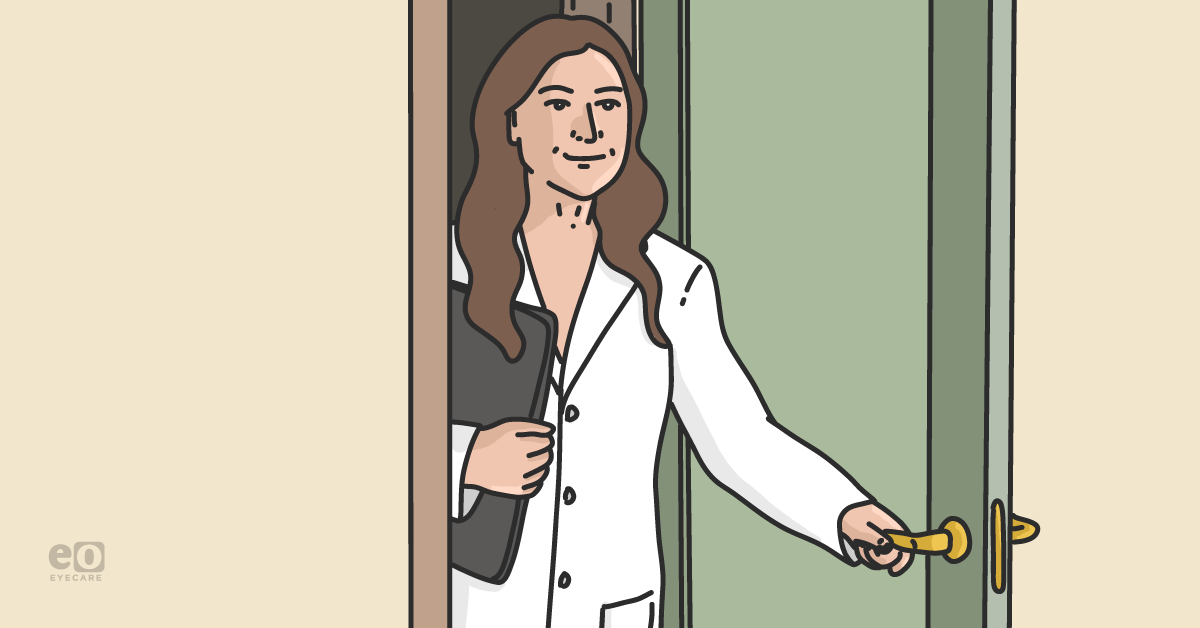That need for
new graduates and young practitioners in the optometric space hasn’t dissipated. In fact, it’s only expanded in the years since the coming of “he who should not be named”: the COVID-19 pandemic.
As a student, you’re pulling long nights working towards the colloquial “lights at the end of the tunnel”: a celebrated graduation and your first contract with “Your Name, OD” on it. But in 2020, the year I graduated, neither was a guarantee.
Our graduation ceremonies were put on indefinite hold, and job security was nearly null and void.
Salaries, practice patterns, corporate structure, negotiating strategies—all of it changed in what felt like the blink of just one graduating class.
Understanding the barriers new graduates face
It’s hard to talk about the
challenges we face as new graduates. My partners have asked me many times to describe to them how practicing as a new doc is different. I’m often stuck between the nothing-giving response, that is, “It just is,” and the emotionally distressed, “Where do I begin?”.
Optometry school and residency prepared me plenty for what to expect in the exam lane. A central retinal vein occlusion (CRVO) in a 29-year-old? I’m on it. Picking up early glaucoma/ “green disease" with guided progression analysis? Give me more. A tough filamentary keratitis patient? Throw it my way. I will take managing disease all day, every day.
Maneuvering interpersonal communication with coworkers
It’s navigating the interoffice dynamics that have challenged me the most. As an extroverted extrovert, I never thought I would be at odds with staff, yet 3 months into practice, I lost a
technician’s respect. Poor work-ups and a lack of accountability quickly turned into excuses galore and behind-my-back eye rolls. If you’ve never lost a staff member’s respect, take it from me: it is not a place you want to be. But if you’re new to practice, you’ll likely run into it, and hopefully, for you, it’s just the once, unlike me.
The first time it happened, my head swirled in existential turmoil. I battled with the notion that not everyone wanted to work the way I do. At first, I felt completely inept in how to handle it. I tried being
sympathetic and educational—which only led to getting walked over more.
I tried to be stern, stating, “I need you to decide if you can step up and handle this,” which was only met with complacency. Ultimately the employees' poor behavior didn’t stop just with me. It continued to impact other providers until the owner let them go. I reflected a lot on how that happened and what actions I could have taken. In truth, I think it’s simple: to gain respect, you have to give it. Now, enacting the “golden rule” into the workplace is trickier.
The value of indirect compliments
Vowing never to let it happen again, I scoured through Dale Carnegie’s
How to Win Friends and Influence People and learned the value of indirect compliments to subconsciously build the respect of future employees.
- Heading into the exam room with the door slightly open: “Hi Mr. Smith, I see you met [Tech]. [Tech]’s extremely thorough!”
- Bringing a patient out to optical: “Ms. Lee, I know we talked about your first progressive addition lens (PAL), and [Optician] is the one who’s going to bring what we talked about into existence.”
The compliments must always be: Just within earshot but indirectly addressing the person they are complimenting, 100% genuine, and used sparingly (to maintain authenticity). Starbucks helps too.
Conclusion
That’s only ONE of the many “New Optometrist” lessons I’ve learned along the way. There are many more that come to mind, such as how to create your own personalized negotiating strategy, proper billing for Plaquenil, and obtaining owner support to start a specialty clinic.
The New Optometrist Newsletter is here to help you through that and much more. So whether you're on your way to graduation or still feel new at heart, subscribe to our newsletters for tips on these topics and so much more.
